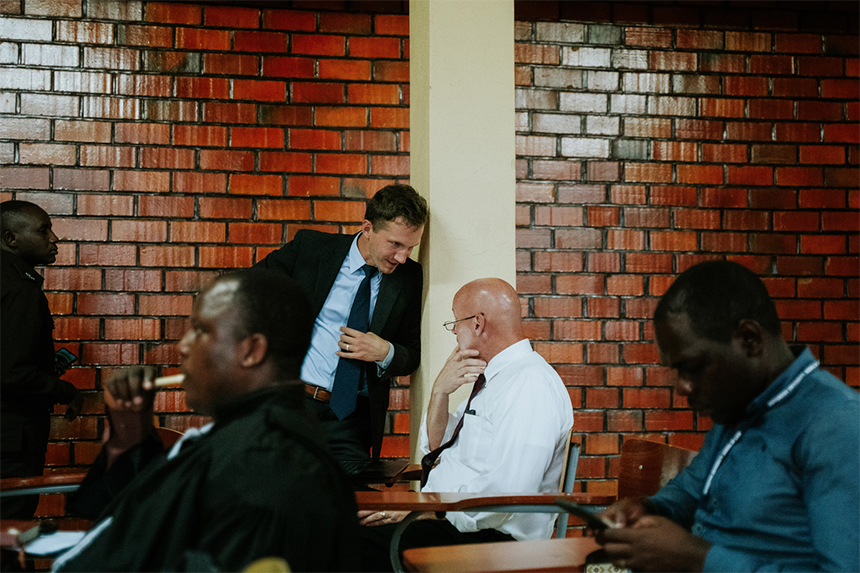

Are you interested in learning more about the public policy process? Whether in the government, private-sector, or non-profit arena, policy is the initiatives, decisions, and actions that help address certain pressing issues within society. Policies cover a wide range of objectives, like promoting public interest, resolving societal problems, allocating resources, and regulating behaviors, all with the common goal of increasing human flourishing.
The public policy process revolves around the creation of strategies and plans to fix societal issues. Domestic policy formulation involves collaboration among government agencies, policymakers, and various stakeholders to craft well-informed and data-supported policies that address a broad spectrum of challenges, ranging from economic development to environmental policy.
The policy agenda, in turn, represents the collection of issues that hold significance for a government or society during a specific period. It functions as a guide for policymakers to determine their priorities.
In the contemporary landscape, data plays a pivotal role in public policy formulation. Policymakers depend on thorough data analysis to make well-informed decisions and formulate policies grounded in evidence. This data-centric approach to policymaking ensures that resources are judiciously allocated to attain desired results.
Just as important as quantifiable support in crafting meaningful policy, is the role of qualitative knowledge. Policymakers must have a comprehensive understanding of both the history of the area as well as a grasp on the cultural norms and political dynamics surrounding the policy issue.
Public policy can generally be categorized into four different types: substantive, regulation, distribution, and redistribution. Each type has a specific purpose and focuses on resolving specific challenges within our society.
Substantive policies are the backbone of public policy initiatives, designed to tackle specific issues at the core of societal challenges. They are characterized by their direct focus on finding solutions to pressing problems. Here are some examples of substantive policies and their roles in addressing various societal issues.
Education reform ensures the educational system in the United States is high-quality and accessible to everyone. Education policy aims to help improve student performance and eliminate the achievement gap in the United States. Examples of initiatives in the academic field may include:

The public policy process for criminal justice focuses on improving the fairness, effectiveness, and equity of the criminal justice system. These policies are meant to help reduce crime, enhance public safety, and ensure justice for all citizens. Key measures include:
Immigration policies deal with issues related to immigration, such as border security, visa programs, and pathways to citizenship. These policies are meant to manage the flow of immigration, uphold human rights, and address other immigration issues. Components of United States immigration policy may include:
Technology and innovation policies foster technological advancements, innovation, and competitiveness. They aim to promote research and development, bolster the tech industry, and enhance economic growth. Initiatives may include:
Regulation policies help protect public interest and ensure specific industries operate ethically and safely. These policies cover a wide range of domains, each with its own challenges and objectives. Here are several examples of regulation policies.
Environmental regulations are a prominent example of regulation policies. These policies aim to safeguard the environment, mitigate pollution, and address the global natural challenges. Key components of environmental regulations include:
Food safety policies are essential for protecting public health by regulating the safety and quality of food products. These policies focus on preventing foodborne illnesses and ensuring the safety of the food supply chain. Key elements include:
Labor regulations are designed to protect the rights and well-being of workers by setting employment standards, ensuring fair labor practices, and preventing exploitation. These policies encompass:
Financial regulations are vital for the stability of the financial sector and the protection of consumers. These policies include:
Healthcare regulations are crucial for maintaining the quality and safety of healthcare services and products. These policies encompass:

Distribution policies are essential for ensuring that resources and benefits are allocated fairly to individuals or groups within society. These policies aim to reduce disparities and promote social and economic well-being. Here are some examples of distribution policies.
Housing policies are an important part of social policy that aims to provide affordable and adequate housing for all members of society. These policies encompass various initiatives, including:
This social policy aims to provide financial assistance to individuals and families facing economic challenges. Key components include:
Education funding policies are vital for ensuring that all students, regardless of their socioeconomic background, have access to a quality education. These policies encompass:
Agricultural policies include subsidies and support programs for farmers to ensure a stable and sustainable food supply. Components of these policies include:
Redistribution policies are instrumental in orchestrating federal, state, and local tax decisions as well as other financial matters that impact income inequality and resource allocation. Several examples of redistribution policies include:
Progressive taxation is a cornerstone of redistribution policies. This type of economic policy aims to create proportional tax rates based on income.Key elements include:
These social policies are designed to provide financial support to individuals and families facing economic hardships. These programs include:
Minimum wage policies can be considered redistribution policies when they aim to lift the income of low-wage workers. Increasing the minimum wage ensures that workers are paid a living wage.
Public policy can manifest in either formal or informal ways, each carrying implications for government institutions, private business, or civil society organizations.
Formal public policy is the structured and codified aspect of government decision-making, encompassing laws, regulations, and budget allocation, shaping the framework and powers of government institutions.
Informal public policy, on the other hand, comprises unwritten practices, traditions, and norms that influence government actions and culture, guiding officials and impacting administration.
In American politics, the formulation and execution of public policy decisions are pivotal to government operation. This section explores how different factors converge to guide policymakers in crafting policy.
In the dynamic landscape of American politics and public policy, policymakers must navigate the influence of political parties, consider national interests, prioritize issues, and embrace collaboration to address pressing challenges effectively.
If you feel passionate about influencing and improving society through the public policy process, consider the Master of Public Policy program at Pepperdine University. The program offers students an opportunity to gain the tools and knowledge necessary to be a leader in the policy making world. One of the most unique aspects of the program is its focus on the human context, history, and culture that must be considered when implementing good policy.
Whether your calling lies in environmental sustainability, economic development, social justice, or international relations, understanding the different facets of public policy is a crucial skill for those looking to make a meaningful contribution to society. Apply for the MPP program at Pepperdine University today.